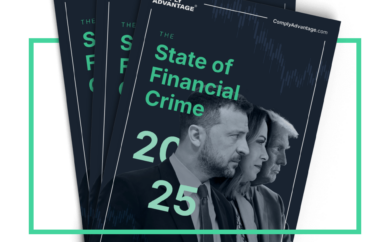Luko Significantly Reduces False Positives and Incorrect Hits
AML Compliance Insurance Customer StoriesThe Company
Luko is the number one neo-insurance company in France, insuring more than 40,000 homes, and the fastest growing insurtech company in Europe. The company was founded in 2016 and has raised $22.2 million in its Series A funding round. Their mission is to reinvent home insurance through social responsibility and technology.
Industry: Insurance
Product: AML Screening
The Challenge
Luko’s compliance team was having to conduct hundreds, if not thousands, of checks a day, which required a lot of manual effort and slowed onboarding time for customers. Flagging high-risk entities is mandatory according to the The French Prudential Supervisory Authority’s (ACPR) directives, so it was essential to ensure that no suspicious activity was slipping through the net.
Luko’s objectives were to meet the regulatory requirements. They also wanted to automate their systems to be able to receive real-time alerts about risk at contract submission or when a claim was filed.
Therefore, when benchmarking AML providers, one of Luko’s main selection criteria was that the tool had to be API-based to allow automation. It also had to be multi-functional and capable of incorporating various high-quality sources of data. Finally, the tool had to be able to cover Europe and North America. Luko decided to partner with ComplyAdvantage as they fit all the criteria mentioned above and were highly recommended by one of Luko’s business partners.
ComplyAdvantage’s customizable matching parameters significantly reduced the number of false positives and incorrect hits, freeing up valuable time for our team.
— Marion Beaufrère, Head of Product, Luko
The Outcome
Working with ComplyAdvantage has allowed Luko to improve their knowledge of financial crime risks. Their team can now easily customize their parameters, change match statuses and escalate alerts to other team members, and the clear audit trail provided by the tool ensures compliance obligations are met.
In addition, customizable matching parameters reduced false positives and incorrect hits, allowing Luko’s team to free up time previously spent on managing false positives to deal with high-risk entities that matter to their business.
Disclaimer: This is for general information only. The information presented does not constitute legal advice. ComplyAdvantage accepts no responsibility for any information contained herein and disclaims and excludes any liability in respect of the contents or for action taken based on this information.
Copyright © 2025 IVXS UK Limited (trading as ComplyAdvantage).



 EN
EN FR
FR